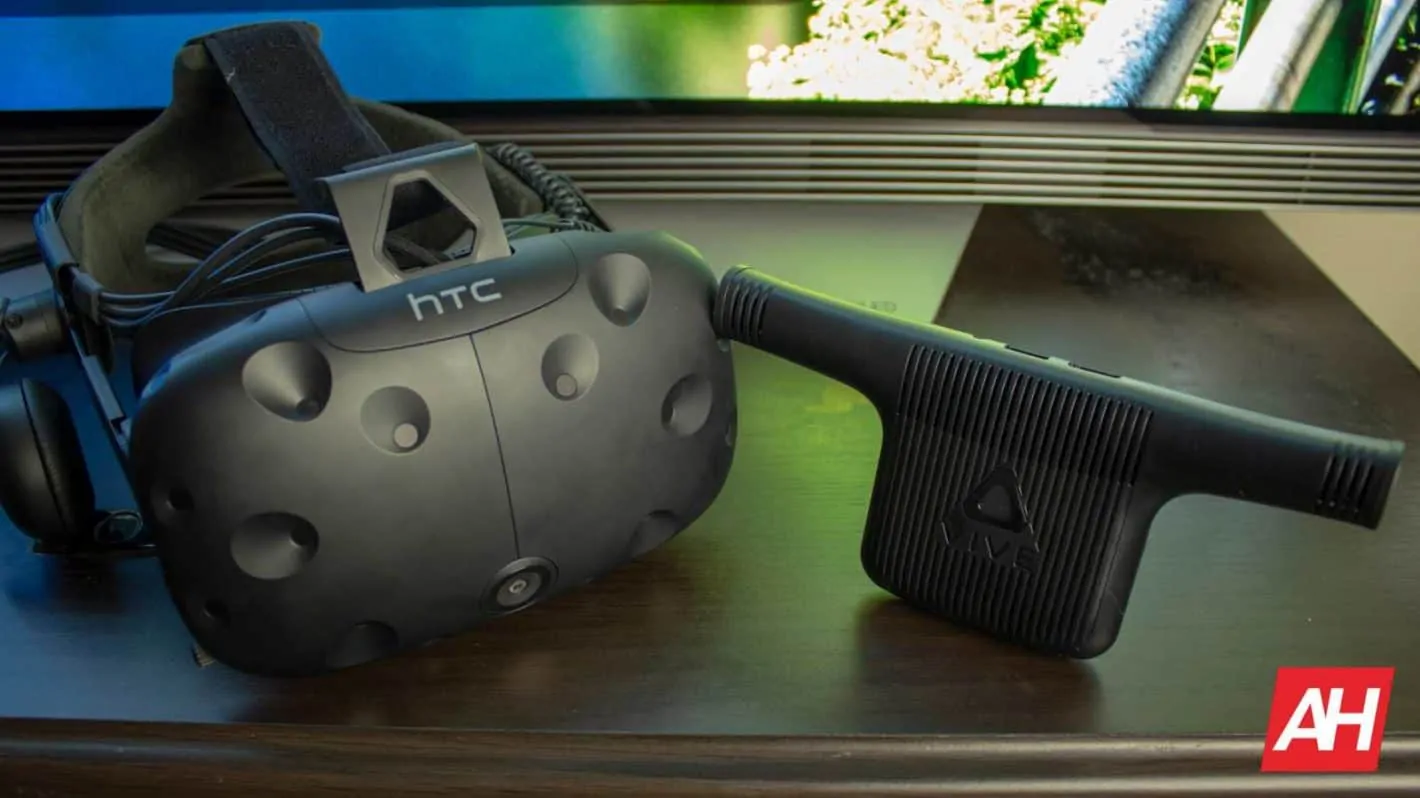A new VR headset from HTC has just made its way through the FCC certification process, and all signs point to it being the enterprise-focused Vive Pro Eye. The new headset sports an identical headset render in the FCC’s images to the previously certified Vive Pro, and its FCC ID isn’t far off. To be specific, the Vive Pro has the FCC ID 2Q29100, while this new device is 2Q29200. That almost certainly means that whatever this new headset is, it’s going to be an offshoot of some sort from the Vive Pro. With all the information out there about the Vive Pro Eye painting it as that headset’s enterprise counterpart, there’s very little room left for doubt.
Other than the tweaked ID, there’s not much different about this headset from the Vive Pro, at least as far as its FCC listing. The label shape and placement, headset render, and many more elements are all the same. Naturally, HTC did include a request for confidentiality, resulting in the redaction of more than a few details. The most notable of those was actual pictures of the device in question, usually pictured in a testing environment in these kinds of filings.
While we’re definitely looking at something very similar to the HTC Vive Pro at this point, there’s no telling just how this new headset will set itself apart from its sibling, since we can’t actually get a look at it. There may be hardware design differences to accommodate different equipment, ports, or other features, or it could just be a software difference that makes the Vive Pro Eye more suited to the enterprise world.
Speaking to pricing and accessories, the HTC Vive Pro, as a point of comparison, can be had with all the trimmings for around $1,300. That package will get you the headset, two controllers, two room-scale base stations, and codes to use on HTC’s website for software goodies. The headset itself has a headline feature in the form of its insane resolution, bringing an eye-searing 615 pixels per inch. This resolution can be delivered a number of ways, including via DisplayPort.
Since there’s no telling just what extra accessories or other trimmings the HTC Vive Pro Eye may have up its sleeve, there’s really not much of a way to account for possible price differences in packages. With a comparable package, the Vive Pro Eye will probably sport a not-insignificant markup just for being enterprise-level gear, though its price shouldn’t wander too terribly far from its consumer brethren.
The Vive Pro Eye is, seemingly, the first attempt to not just build enterprise-facing features into a consumer VR product to facilitate its use in the space, but to transform that product altogether to make it more enterprise-friendly, from the ground up. It’s a bold move on HTC’s part, for sure, and is banking on wide adoption and the appeal of precise, high pixel density work in enterprise VR. Only time will tell if this move will pay off for HTC in particular, but the Taiwanese OEM will most likely be kicking off a trend if this device gains any real traction.

